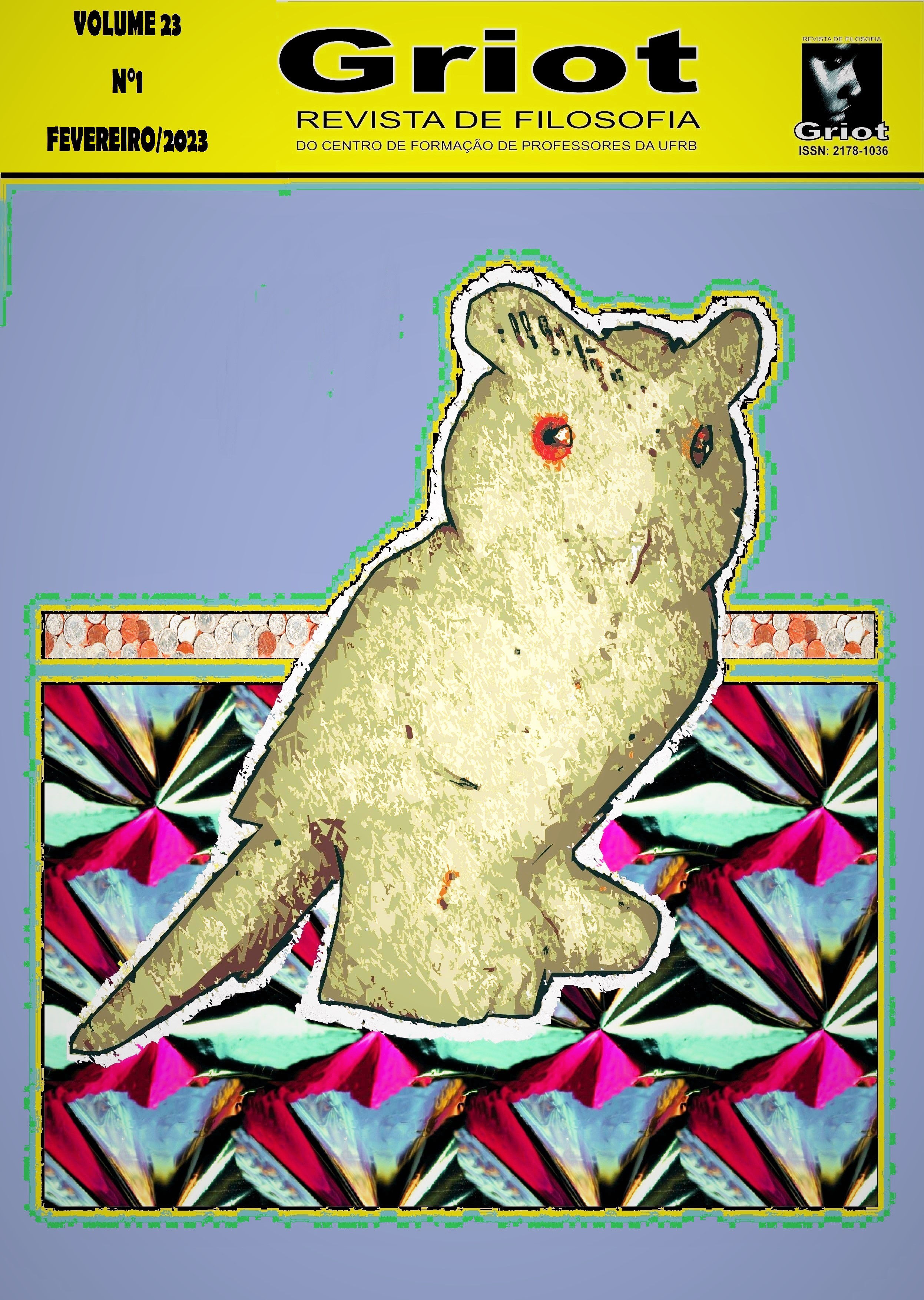Después de Baumgarten: la pop estética como manifiesto posmoderno
DOI:
https://doi.org/10.31977/grirfi.v23i1.3221Palabras clave:
Arte; Everyday Aesthetics; Experiencia estética; Inteligencia artificial.Resumen
Se plantea que la estética posmoderna, alejada de la posibilidad de concebirse como estética filosófica o filosofía del arte (al menos como la presentó Alexander G. Baumgarten al inicio de la Modernidad), adquiriría en la era actual la fisonomía de una pop estética, cuya expresión fundante pareciese ser la propia experiencia estética y no otras condiciones atribuibles a un determinado canon estético. En relación a esta conjetura, que por lo visto implica una cierta superación de la idea de obra, se discute, por un lado, la conexión entre arte e inteligencia artificial y, por otro, las implicancias de la Everyday Aesthetics sobre el concepto de experiencia. Una y otra práctica, testimoniarían en la actualidad un renovado sentido común estético.
Descargas
Citas
BAUMGARTEN, Alexander G. L’estetica. S. Tedesco (ed.) & F. Caparrotta (trad.). Palermo: Aesthetica, 2000.
BUCHENAU, Stefanie. The Founding of Aesthetics in the German Enlightenment: The Art of Invention and the Invention of Art. Cambridge: Cambridge University Press, 2013.
CHIABRA, Juan. Dante y la filosofía de la historia. Humanidades [La Plata], vol. 2, pp. 217-228, 1921.
DAVIES, Stephen. The Aesthetics of Adornments. En CARTER, Curtis L. & YUEDI, Liu (eds.). Aesthetics of Everyday Life: East and West. Newcastle upon Tyne, U.K.: Cambridge Scholars Publishing, 2014, pp. 124-131.
DEPRAZ, Natalie. La inscripción de la sorpresa en la fenomenología de las emociones de Edmund Husserl. Eidos, n. 21, pp. 160-180, 2014.
FARÍAS, Gabriela. Everyday Aesthetics in Contemporary Art. Rupkatha Journal on Interdisciplinary Studies in Humanities, vol. 3, n. 3, pp. 440-447, 2011.
GABORIT, Mauricio. Los círculos de la violencia: sociedad excluyente y pandillas. Revista ECA, año LX, pp. 1145-1154, 2005.
GENETTE, Gérard. Figure III. Discorso del racconto. Turín: Einaudi, 1976.
GODOY, María Jesús. El desagrado en la estética de lo cotidiano. Éndoxa, n. 47, pp. 229-249, 2021.
GONZÁLEZ, María Laura. Intervenciones en el Espacio Público: performance, mirada y ciudad. Revista Brasileira de Estudos da Presença, vol. 3, n. 3, pp. 727-741, 2013.
GRAHAM, Gordon. Philosophy of the Arts. London & New York: Routledge, 2005.
GRIFFERO, Tonino. ¿Por qué el arte y no, más bien, la filosofía? Notas marginales a la primera ‘estética’ de Schelling. En VATTIMO, Gianni (comp.). Filosofía y poesía: dos aproximaciones a la verdad. Barcelona: Gedisa, 1999, pp. 129-151.
HOFSTADTER, Douglas. Gödel, Escher, Bach: una eterna trenza dorada. México: Consejo Nacional de Ciencia y Tecnología, 1982.
KOBAU, Pietro. Justificar la estética, justificar la estetización. En VATTIMO, Gianni (comp.). Filosofía y poesía: dos aproximaciones a la verdad. Barcelona: Gedisa, 1999, pp. 75-107.
MELCHIONNE, Kevin. The Definition of Everyday Aesthetics. Contemporary Aesthetics, vol. 11, pp. 1-4, 2013.
MOCTEZUMA, Andrés & MOCTEZUMA, Vicente. Notas sobre el arte posmoderno y el desarrollo de las fuerzas productivas. Casa del Tiempo II, pp. 1-4, 2009.
OYARZÚN, Pablo. Indagaciones sobre el concepto de experiencia. Seminario de Filosofía, n. 11, pp. 123-134. 1998.
PEÑA, Janna. The Pianist versus the Smart Piano. Lynn University, pp. 1-8. 2021.
PUGLISI, Gianni. Un nuevo interlocutor en las relaciones entre filosofía y poesía: la estética computacional de Hofstadter. En VATTIMO, Gianni (Comp.). Filosofía y poesía: dos aproximaciones a la verdad. Barcelona: Gedisa, 1999, pp. 69-80.
SABATER, Carmen. La vida privada en la sociedad digital. La exposición pública de los jóvenes en internet. Aposta, n. 61, pp. 1-32. 2014.
TATARKIEWICZ, Wladyslaw. Historia de la estética. II. La estética medieval. Madrid: Akal, 2007.
VIDAL, Cristina. La mujer maya y su papel político y religioso. En ALFARO, Carmen y TÉBAR, Estíbaliz (eds.). Protai Gynaikes: mujeres próximas al poder en la Antigüedad. Valencia: Universidad de Valencia, 2005, pp. 173-185.
VILAR, Gerard. Cánones en el Arte y la Literatura. Pluralismo y relativismo en la estética de hoy. En NOTARIO RUIZ, Antonio (ed.). Estética: perspectivas contemporáneas. Salamanca: Universidad de Salamanca, 2013, pp. 37-66.
VIVERO, Luís. Murales y graffiti: expresiones simbólicas de la lucha de clases. Ánfora, vol. 19, n. 33, pp. 71-87. 2012.
ZÚÑIGA, Mario. Las “maras” salvadoreñas como problema de investigación para las Ciencias Sociales. Anuario de Estudios Centroamericanos, Universidad de Costa Rica, pp. 87-110. 2007.
Descargas
Publicado
Cómo citar
Número
Sección
Licencia
Derechos de autor 2023 Leopoldo Tillería Aqueveque

Esta obra está bajo una licencia internacional Creative Commons Atribución 4.0.
Los autores que publican en Griot: Revista de Filosofía mantienen los derechos de autor y conceden a la revista el derecho de primera publicación, con el trabajo simultáneamente licenciado bajo la Creative Commons Attribution 4.0 International License, permitiendo compartir y adaptación, incluso con fines comerciales, con el debido reconocimiento de la autoría y publicación inicial en esta revista. Lea mas...









































































